'We will do what's necessary': USA Football CEO wants to dominate flag football in Olympics
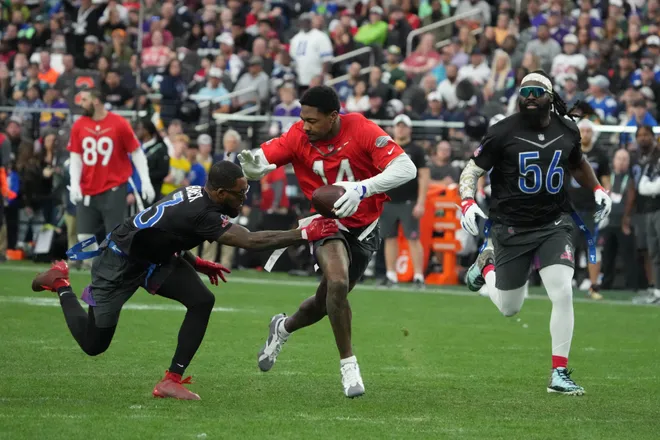
By now, most people know that flag football is coming to the Olympics at the 2028 Games in Los Angeles. What many people don’t yet know is what comes next before football makes its Olympics debut in five years.
In an exclusive interview with USA TODAY, USA Football CEO Scott Hallenbeck talked about how American football has grown – nationally and internationally – and what lies ahead before 2028. He covered the push to get football into the Olympics, what goes into building the team, who might participate and what qualifying will look like.
Here’s everything we have so far on flag football coming to the Olympics in 2028.
Team USA:Lamar Jackson and Tyreek Hill lead this (totally absurd) 2028 Olympics flag football team
USA Football: Growing the game at home
As the CEO of USA Football, one of Hallenbeck’s biggest priorities is helping football grow throughout the United States.
NFL STATS CENTRAL: The latest NFL scores, schedules, odds, stats and more.
“For almost two decades now, we’ve hyperfocused on everything from setting standards and best practices to education,” he said.
That’s included certifying over one million coaches within the last decade using both online and in-person training. That training, Hallenbeck says, is incredibly comprehensive, teaching fundamental points like how to block, how to tackle, etc. as well as tactical points for coaching a game.
The certification is also designed to help would-be coaches develop methods to coach children at different levels as they get older, keeping in mind that not all kids are the same.
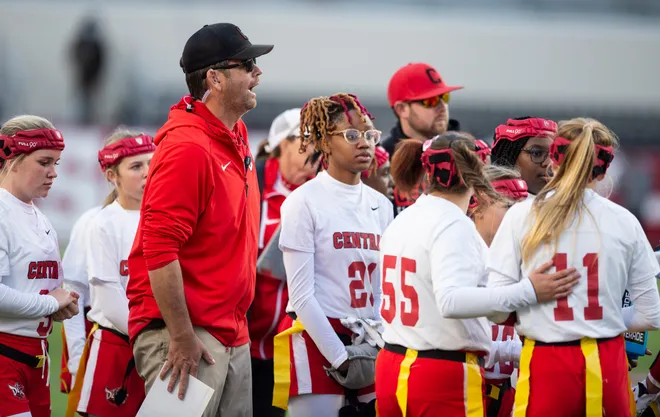
In addition to certifying coaches, USA Football also helps leagues get started around the country. That involves forming a board, creating emergency action plans and developing a foundational pathway that allows kids to move from non-contact to contact football if and when they are ready.
“We don’t run youth leagues, so we’re not a Pop Warner, we’re not an American Youth Football,” Hallenbeck clarifies. “We work with everyone. We’re frankly agnostic to where you’re playing, whether it’s tackle, whether it’s flag. We really just want to help all of that foundation of the sport be the best they can be through supporting and serving them in a myriad of ways.”
Outside of the U.S., the growth of the sport is aided by the International Federation of American Football (IFAF) and its continental branches – America, Oceania, Europe, Asia and Africa. These branches commit to identifying and developing talent to pull together teams across 70 member countries to compete in IFAF-run international competitions.
Unlike some countries that have sports ministries that work with their national Olympic committees, the United States doesn’t have a federally mandated body.
According to Hallenbeck, the USA Football’s responsibility is “leading the development and ultimately the selection of Team USA that goes and competes in these competitions.”
2034 Olympic Games:Winter Olympics set to return to Salt Lake City in 2034 as IOC enters talks
What do international football competitions look like?
Hallenbeck, along with his duties with USA Football, is also the vice president and a member of the board with IFAF. He compares the IFAF’s role in charge of international American football to the governing bodies of other sports: FIFA, FIBA, etc.
The IFAF directs the efforts to put together both Continental and World Championships for football. The tournaments are similar to those in other international sports – they begin with a round-robin group stage before the top teams from each group go head-to-head in knockout rounds.
Countries qualify for World Championships based on their performance in previous tournaments (the last champions get an automatic berth) and in Continental Championships. Host nations also receive an automatic berth, similar to the FIFA and FIBA World Cups.
There are international competitions for both tackle and flag football, though Hallenbeck says flag has seen a higher rate of growth over the past five years. Flag football competitions tend to have between 20-30 teams vying for spots in the World Championships, according to Hallenbeck. Tackle, on the other hand, usually draws about eight, with the U.S., Canada, Mexico and Japan often dominating the rest of the competition.
“Part of that is it’s just easier, more cost effective, and, you know, just fewer numbers of folks need to participate. So it sort of lends itself to a faster development and scaling opportunity, and we’re seeing that,” he said. “And of course with the focus over the last number of years about the potential of the Olympics, or being included in the Olympics, that has also driven interest and participation.”
Hallenbeck also pointed out that the growing participation in flag football isn’t just happening abroad. It has become more and more popular in the United States, particularly among women.
“We’re seeing a dramatic increase in number of flag-only leagues, a dramatic increase in tackle-only leagues agreeing to add flag as a discipline within their leagues… At the high school level, there’s already seven states that have added girls’ flag as a varsity sport and that’s only going to increase here dramatically [after its inclusion in the Olympics].
“There’s already NAIA schools with scholarships, we’re in discussion with the NCAA about emerging sport for women,” he said.
“Maybe part of it is that over the many years there was sort of a reluctance to have girls play, and now the floodgates are open.”
Getting football into the Olympics
Around 2018, the IFAF began to seriously consider making a push to include football in the Olympics.
"The real growth, the real, all of a sudden, light bulb going off and all of us saying, ‘we really got something here’ was probably the 2018 men’s and women’s flag world championships in Panama," Hallenbeck said.
Fortunately for the IFAF and their efforts, Hallenbeck himself had previously worked with the International Olympic Committee (IOC) in the '90s. He had a sense of what it would take, but there was one significant roadblock: the IOC's cap on the number of athletes that can participate in a single year.
Currently, the cap stands at 10,500. In other words, across every sport and event discipline at each Olympic Games, no more than 10,500 athletes across all participating countries are allowed.
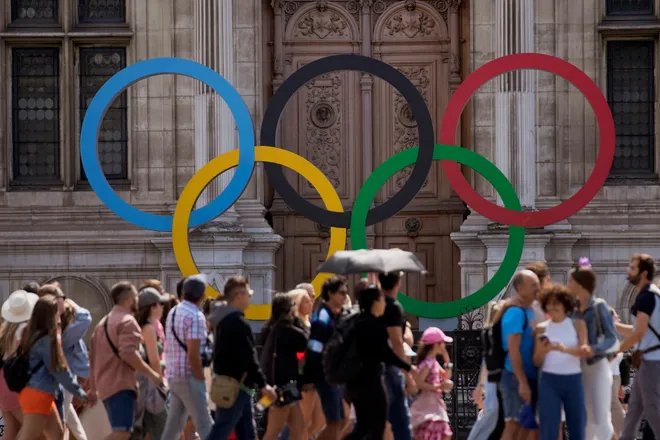
Hallenbeck explains that previous to the 2024 Olympics, invitational sports – like flag football, squash, break dancing, etc. – were allowed to exceed that cap. Starting next year, those invitational sports will need to fit their athletes under the cap as well, creating a heightened competition for spots across all sports.
In the case of football, normally an 11 vs. 11 sport, Hallenbeck and the IFAF had to come up with a solution to trim rosters down.
Their idea, which eventually helped get flag football approved, was to make the Olympic event a five-on-five affair. In practice, it's similar to how rugby sevens (seven-on-seven) is the Olympic format of the sport, rather than the traditional 15-on-15.
"There was just a lot more willingness and openness from the IOC to consider [five-on-five] as an option," Hallenbeck said.
Suni Lee:Olympic champion gymnast explains why she gained 45 pounds. 'It was so scary.'
Who will participate in the 2028 Olympics?
The qualification process for flag football in the 2028 Olympics hasn’t yet been defined explicitly, though Hallenbeck predicted it would look similar to other sports’ processes. In essence, it’s one that includes continental and world championships.
Though it’s not defined yet, Hallenbeck said that part of the process will come soon to give advance notice to all countries that hope to participate.
Team USA Flag Football team construction
One of the most anticipated parts of the pre-Olympics process coming from USA Football is how they will construct the American teams.
There will be both a men’s and a women’s team in 2028, per Olympics requirements. Hallenbeck said there’s also a hope that – should flag football stick around for future Olympic Games – there will be an opportunity to include flag football in the Paralympics in coming years.
“We feel like that is a worthwhile and important opportunity and would like to build that side as well,” Hallenbeck said.
When it comes to the construction of both the men’s and women’s team, there are several factors to keep in mind.
On the men’s side, there’s a big opportunity to turn to the NFL and college football to help put together a team of uber-talented football players.
When news initially broke about the IOC approving the inclusion of flag football in the 2028 Games, the NFL stated there was a high volume of player interest. The league also said they’d encourage active players to play for Team USA.
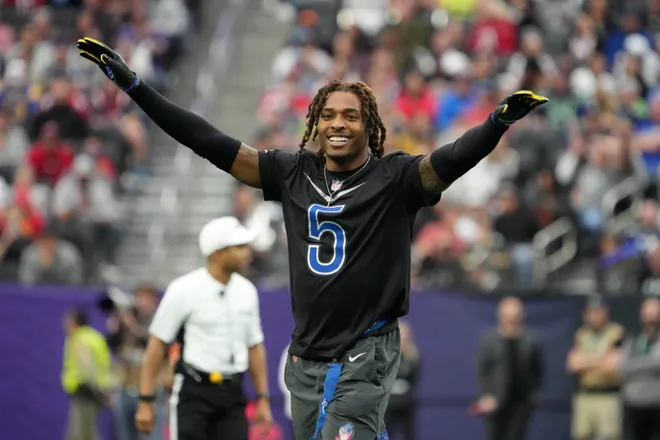
However, Hallenbeck also noted that there are already dozens of active players across both the men’s and women’s American teams, both of which just won the IFAF America Continental Championship this July.
“We value the concept of the existing adult amateur players that have demonstrated true elite status and performance in this space. So we’re going to be very open-minded about anyone and everyone meeting the criteria that we set.” he said. “We’re going for the gold, and we will do what’s necessary to put the best team together.”
That may also include another method of recruiting players to both teams, particularly the women’s team, using what Hallenbeck refers to as “talent transfer.” Essentially, talent transfer is the idea that athletes from other sports might have the physical tools to become an elite athlete in another sport with the right preparation and training.
One example Hallenbeck gave is Olympic bobsledding. It’s not uncommon for bobsledding teams to be made up of athletes that originally participated in other sports, like track, because the attributes like speed and leg strength translate across sports.
There’s even a movie about the idea, Disney’s “Cool Runnings,” about the first Jamaican bobsledding team in the 1988 Olympics, made up of former sprinters.
Hallenbeck said that there is a “massive opportunity for talent transfer” in flag football, particularly on the women’s side.
In all, he and USA Football will consider many factors when it comes to putting Team USA together for the 2028 Olympics in an all-out attempt to win the first Olympic gold medal in the sport.
American football’s popularity is still growing
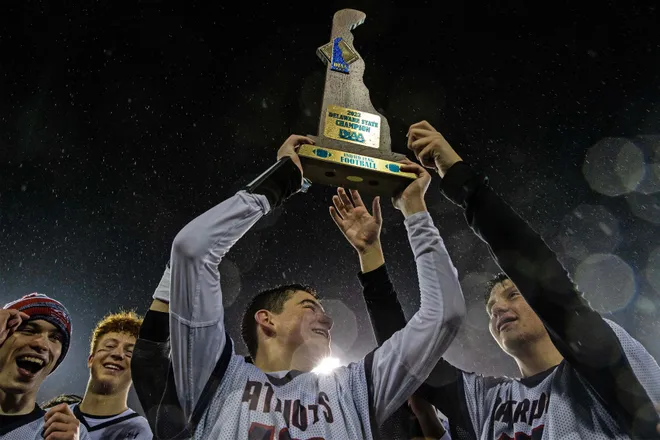
According to data provided by USA Football, participation in American football is still growing in both flag and tackle formats, both at home and abroad.
More than 7 million Americans participated in flag football in 2022, with almost half a million girls aged 6-17 making up that number.
Internationally, 20 million people across 100 countries worldwide are playing football, with flag football making up a hefty portion of that as a rapidly growing sport.
Disclaimer: The copyright of this article belongs to the original author. Reposting this article is solely for the purpose of information dissemination and does not constitute any investment advice. If there is any infringement, please contact us immediately. We will make corrections or deletions as necessary. Thank you.







